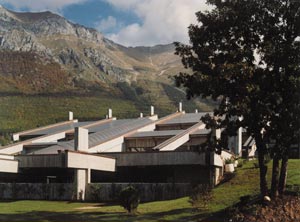
After a difficult year, it seems that an air of optimism is back in the INFN laboratories at Gran Sasso. On 17 June the competent court of the city of Teramo agreed to certain scientific activities starting up again in Hall C, as requested by INFN. In particular, the installation of the OPERA experiment in Hall C, which began in March 2003 but was suspended in early June, will be able to resume. This decision is a sign that the competent authorities recognize the importance of the research being done at the Gran Sasso Laboratories and on the CERN Neutrinos to Gran Sasso (CNGS) programme in particular.
The problems began on 16 August 2002 when, following a series of unfortunate errors in Hall C, the team from the BOREXINO experiment caused 50 litres of trimethylbenzene to be discharged into the environment. The accident occurred at the very moment when a local debate on a safety tunnel designed to provide the underground laboratory complex with access independent from the adjacent road tunnel – very necessary in case of a disaster in the road tunnel – was beginning to become acrimonious. In such a tense atmosphere, even though no damage was caused by the accident, the fact that it could have done was enough to trigger a judicial enquiry.
In October 2002, the BOREXINO detector was therefore placed under a sequestration order by the Teramo public prosecutor. Subsequently, as the release of information by the regional government cast serious doubts on the water-tightness of the Gran Sasso Laboratories’ drainage system, INFN took the precautionary measure of suspending all activities requiring the handling of any kind of fluid throughout the underground laboratories on 5 June 2003. INFN then requested the immediate intervention of the competent government authorities, and at the same time, undoubtedly for the same reasons, the whole of Hall C was placed under a sequestration order.
Rapid and effective action from the Civil Defence Department is now awaited following the Italian government’s decision on 27 June 2003 to declare a state of environmental emergency with regard to the entire Gran Sasso facility, that is, the laboratories, the road tunnels, the environment in general and the water system in particular. This intervention by the government should allow the laboratory’s activities to return to normal and guarantee the complete safety of the citizens of the region of Abruzzo. These measures are fundamental to ensure that all of Gran Sasso’s activities can begin again in an atmosphere of complete trust between the scientists and the local population.








